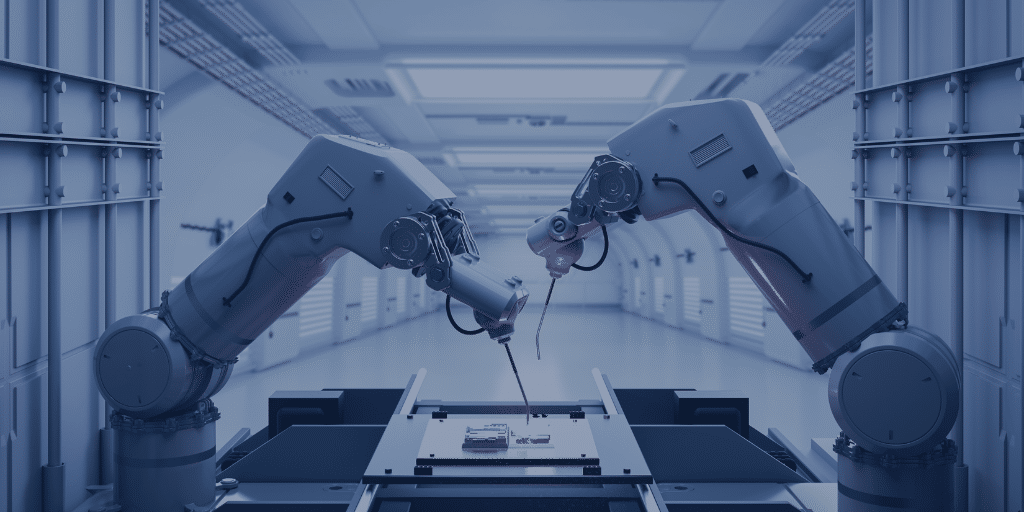New tech continues to play a transformative role in increasing organizational resilience from supply chain disruption. A strong, up-front investment in automation and predictive technologies provides increased visibility into vulnerabilities.
Our understanding of the supply chain has been changed by the pandemic and recent geopolitical crises. We’ve become more aware of potential and future roadblocks and our forward-looking perspective is driving us to “future-proof.” The use of technology will be crucial in helping to predict and respond quickly to dynamic shifts in the market. What’s clear is that new automation and predictive technologies are becoming transformational as organizations move toward more resilient supply chains.
In the era before Covid, value was derived from efficiency and productivity, while the supply chain operated primarily in the shadows. These old processes and beliefs no longer apply in this era of dynamic change. The vulnerabilities of lean manufacturing models have become increasingly evident in the face of recent global crises and inventory disruptions. Shortages of all kinds, not only semiconductors, have exposed the massive impact the supply chain has on the global economy.
Concurrently, automation and predictive technologies are maturing and becoming more powerful. We’re seeing manufacturers employing the use of these technologies up and down their supply chains. Let’s take a closer look.
Predictive Technology Increases Supply Network Visibility
Investing in increased supply network visibility is a key component to a smart shortage mitigation strategy. The real value is in the ability to predict vulnerabilities and mitigate in real-time so that there is no set-back to bounce back from. Many businesses outsource this task to their supply chain partners, which is why it is essential to choose a distribution partner who has the in-house capabilities to detect emerging vulnerabilities and manage your risk profile. Our previous post on Strengthening Supply Chain Resilience discussed the need to stay ahead by capturing deeper visibility into the supply chain and understand risks beyond Tiers 1 and 2. We feel even more strongly about this now as advancements in predictive technology develop.
Automation Technologies Are Optimizing Supply Chain Management
Automation technologies are being deployed throughout the supply chain. Some of the value lies in the potential savings gained by reassigning human labor to autonomous mobile robots (AMR), freeing up your organization’s intelligent minds to do more critical thinking and creative work. What’s potentially more valuable is the ability to reshore operations, and, subsequently, decrease shipping costs while speeding up production timelines.
From the blockchain being used to manage cross-border transactions to optimizing loading for maximum weight efficiency and the last mile, every step of the supply chain is being explored to uncover new uses for this technology. More than just robotic warehousing, drone deliveries, and 3D printing, automation reaches further into production and supply chain management. Manufacturers are using automation technology like machine learning (ML) for distributed inventory flow forecasting (DIFF), predictive order flow, and geopolitical risk management software.
How to Incorporate Automation and Predictive Technologies into Your Supply Chain Management
So, how can you incorporate automation and predictive technologies into your supply chain management functions — or, where should you begin? Here’s a start:
- Embrace automation: create and employ automated systems and processes to heighten your visibility into the increasingly complex global supply chain.
- Invest pre-emptively, especially in predictive and risk management technology, whether that is internally or by choosing a trusted distributor with such capability. When businesses neglect to invest in risk mitigation upfront, they may pay sorely for it when there is a shock to the market.
- Tap into a global sourcing network: source needed parts from suppliers within your region, a task made feasible through advances in automation technologies and an increasingly connected network.
- Continuously assess to stay current on emerging vulnerabilities, tech developments, and distribution partner capabilities.
A reliance on outdated technology can cause inefficiencies, introduce human error, and increase costs. Pivoting to systems with automation and predictive capabilities modernizes your supply chain management and gives you a fuller picture of what’s to come.
Read more:





